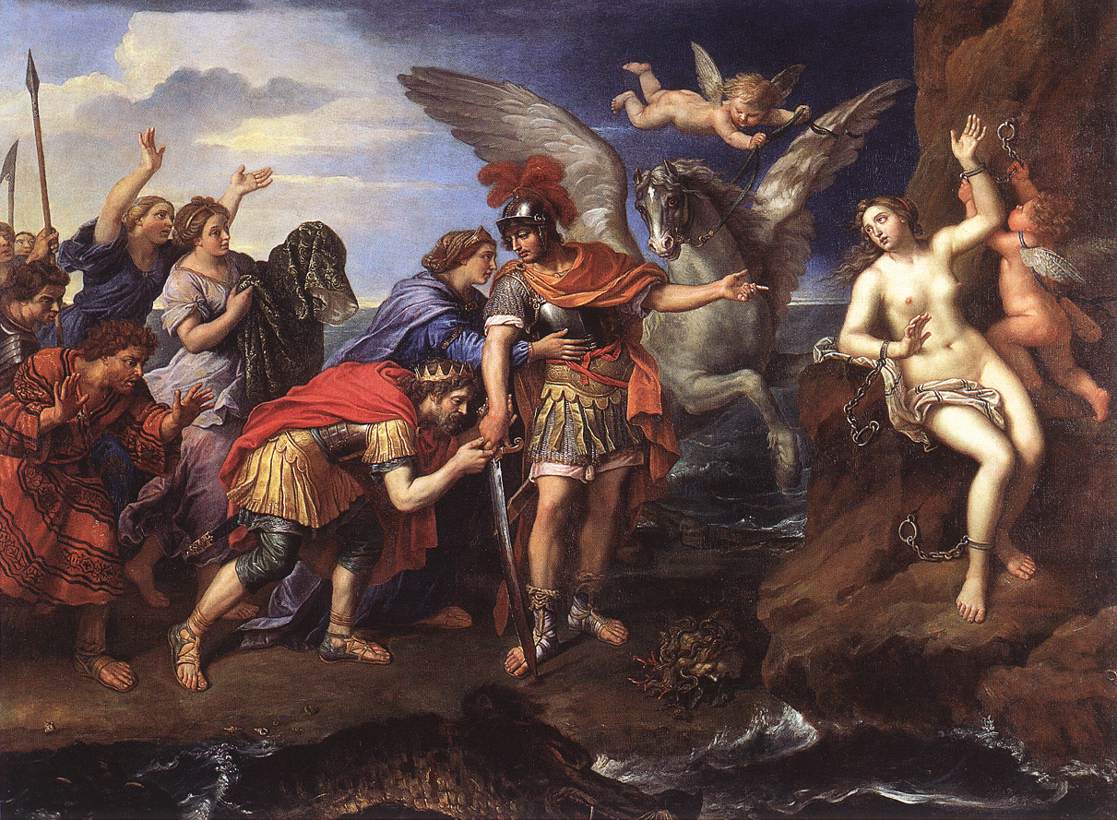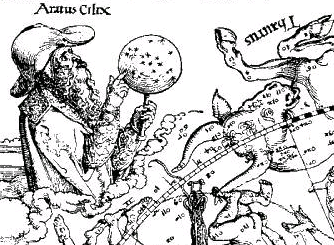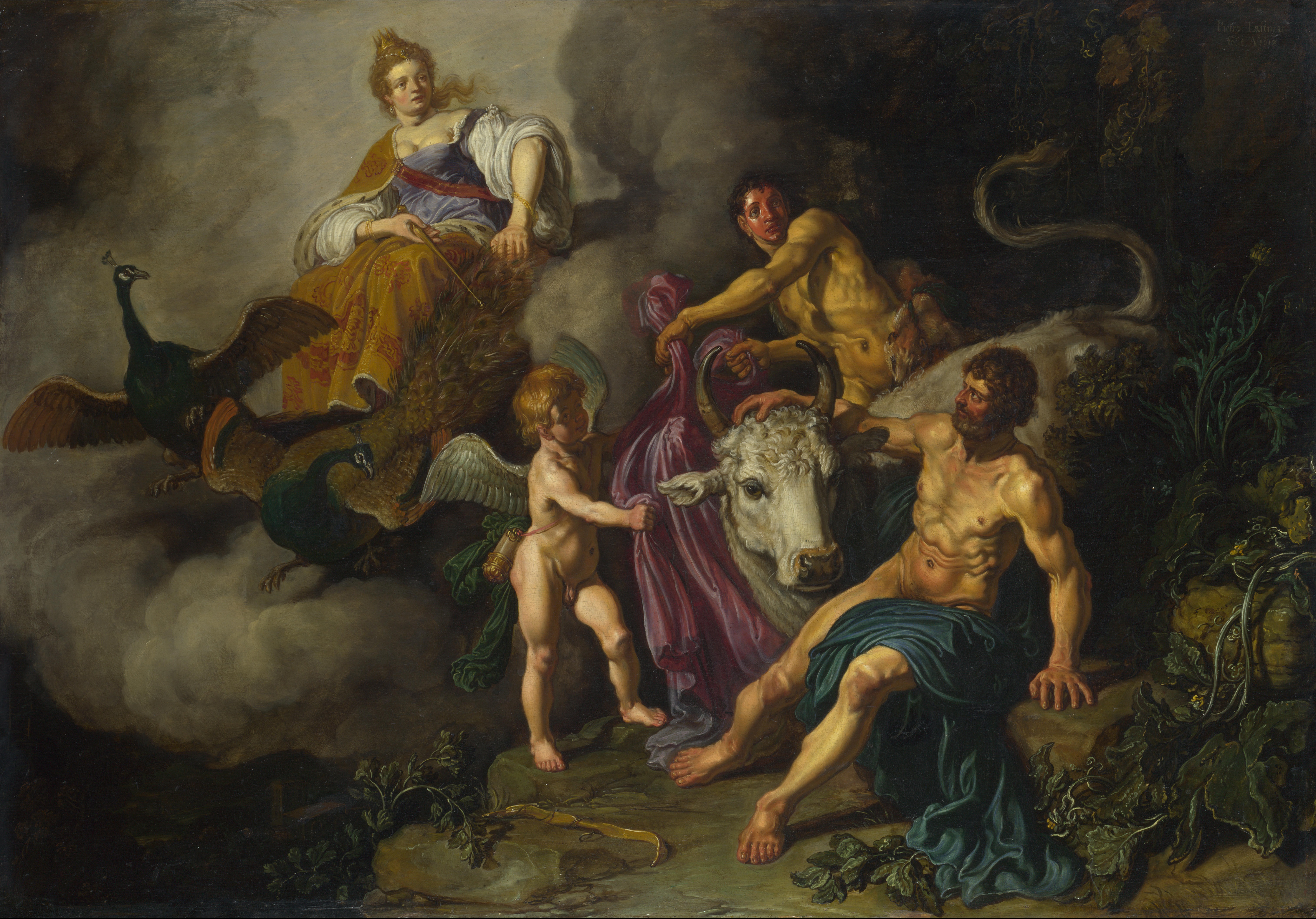|
Cepheus, King Of Aethiopia
In Greek mythology, Cepheus (; Ancient Greek: Κηφεύς ''Kepheús'') was the name of two rulers of Aethiopia, grandfather and grandson. Family Cepheus was the son of either Belus, Agenor or Phoenix. If Belus was his father, he had Achiroe, daughter of Nilus as mother, and Danaus, Aegyptus and Phineus as brothers. He was called Iasid Cepheus, pertaining to his Argive ancestry through King Iasus of Argus, father of Io. Mythology Cepheus is prominently featured in the Perseus legend as the husband of Cassiopeia and father of Princess Andromeda, and whose brother Phineus expected to marry Andromeda. Various sources described his kingdom to be "Aethiopia" or later as the city of Joppa (Jaffa) in Phoenicia, which was named after the elder Cepheus' wife, Iope, daughter of Aeolus. When Cepheus' proud wife Cassiopeia foolishly boasted that Andromeda was more beautiful than the Nereids, not only the sea-nymphs themselves but also Poseidon was angered. Thus, the sea god sent ... [...More Info...] [...Related Items...] OR: [Wikipedia] [Google] [Baidu] |
Belus (Egyptian)
In Greek mythology, Belus (Ancient Greek: Βῆλος ''Bē̂los'') was a king of Egypt and father of Aegyptus and Danaus and (usually) brother to Agenor. The wife of Belus has been named as Achiroe, or Side (eponym of the Phoenician city of Sidon). Diodorus Siculus claims that Belus founded a colony on the river Euphrates, and appointed the priests-astrologers whom the Babylonians call Chaldeans who like the priests of Egypt are exempt from taxation and other service to the state. Genealogy Belus was the son of Poseidon and Libya. He may also be Busiris, son of Libya, ruler of Egypt, killed by Heracles, although Heracles was born many generations after Belus since he was a grandchild of Perseus; see Argive genealogy below. According to Pausanias, Belus founded a temple of Heracles in Babylon.Pausanias, 4.23.10 The '' Bibliotheca'' also claims that Agenor was Belus' twin brother. Belus ruled in Egypt, and Agenor ruled over Sidon and Tyre in Phoenicia. The wife of Belus has been n ... [...More Info...] [...Related Items...] OR: [Wikipedia] [Google] [Baidu] |
Gaius Julius Hyginus
Gaius Julius Hyginus (; 64 BC – AD 17) was a Latin author, a pupil of the scholar Alexander Polyhistor, and a freedman of Caesar Augustus. He was elected superintendent of the Palatine library by Augustus according to Suetonius' ''De Grammaticis'', 20. It is not clear whether Hyginus was a native of the Iberian Peninsula or of Alexandria. Suetonius remarks that Hyginus fell into great poverty in his old age and was supported by the historian Clodius Licinus. Hyginus was a voluminous author: his works included topographical and biographical treatises, commentaries on Helvius Cinna and the poems of Virgil, and disquisitions on agriculture and bee-keeping. All these are lost. Under the name of Hyginus there are extant what are probably two sets of school notes abbreviating his treatises on mythology; one is a collection of ''Fabulae'' ("stories"), the other a "Poetical Astronomy". ''Fabulae'' The ''Fabulae'' consists of some three hundred very brief and plainly, even crudely, to ... [...More Info...] [...Related Items...] OR: [Wikipedia] [Google] [Baidu] |
Nereid
In Greek mythology, the Nereids or Nereides ( ; grc, Νηρηΐδες, Nērēḯdes; , also Νημερτές) are sea nymphs (female spirits of sea waters), the 50 daughters of the 'Old Man of the Sea' Nereus and the Oceanids, Oceanid Doris (mythology), Doris, sisters to their brother Nerites (mythology), Nerites. They often accompany Poseidon, the god of the sea, and can be friendly and helpful to sailors (such as the Argonauts in their search for the Golden Fleece). Etymology The synonyms Νηρηΐδες and Νημερτές are etymologically unrelated. Νηρηΐδες is a patronymic, describing them as the daughters of Nereus. Νημερτές means literally 'not-mistaking', and there is an adjective of the same form meaning 'clear', 'unmistakable', or 'true'. Mythology The Nereids symbolized everything that is beautiful and kind about the sea. Their melodious voices sang as they danced around their father. They are represented as beautiful women, crowned with branc ... [...More Info...] [...Related Items...] OR: [Wikipedia] [Google] [Baidu] |
Stephanus Of Byzantium
Stephanus or Stephan of Byzantium ( la, Stephanus Byzantinus; grc-gre, Στέφανος Βυζάντιος, ''Stéphanos Byzántios''; centuryAD), was a Byzantine grammarian and the author of an important geographical dictionary entitled ''Ethnica'' (). Only meagre fragments of the dictionary survive, but the epitome is extant, compiled by one Hermolaus, not otherwise identified. Life Nothing is known about the life of Stephanus, except that he was a Greek grammarian who was active in Constantinople, and lived after the time of Arcadius and Honorius, and before that of Justinian II. Later writers provide no information about him, but they do note that the work was later reduced to an epitome by a certain Hermolaus, who dedicated his epitome to Justinian; whether the first or second emperor of that name is meant is disputed, but it seems probable that Stephanus flourished in Byzantium in the earlier part of the sixth century AD, under Justinian I. The ''Ethnica'' Even as an ... [...More Info...] [...Related Items...] OR: [Wikipedia] [Google] [Baidu] |
Aeolus (son Of Hellen)
In Greek mythology, Aeolus or Aiolos (; grc, Αἴολος , ) is a name shared by three mythical characters. These three personages are often difficult to tell apart, and even the ancient mythographers appear to have been perplexed about which Aeolus was which. Diodorus Siculus made an attempt to define each of these three (although it is clear that he also became muddled), and his opinion is followed here. * The first Aeolus was a son of Hellen and the eponymous founder of the Aeolian race. * The second Aeolus was a son of Poseidon, who led a colony to islands in the Tyrrhenian Sea. * The third Aeolus was a son of Hippotes who is mentioned in the ''Odyssey'' and the ''Aeneid'' as the ruler of the winds. All three men named Aeolus appear to be connected genealogically, although the precise relationship, especially regarding the second and third Aeolus, is often ambiguous as their identities seem to have been merged by many ancient writers. Aeolus was also the name of the foll ... [...More Info...] [...Related Items...] OR: [Wikipedia] [Google] [Baidu] |
Phoenicia
Phoenicia () was an ancient thalassocratic civilization originating in the Levant region of the eastern Mediterranean, primarily located in modern Lebanon. The territory of the Phoenician city-states extended and shrank throughout their history, and they possessed several enclaves such as Arwad and Tell Sukas (modern Syria). The core region in which the Phoenician culture developed and thrived stretched from Tripoli and Byblos in northern Lebanon to Mount Carmel in modern Israel. At their height, the Phoenician possessions in the Eastern Mediterranean stretched from the Orontes River mouth to Ashkelon. Beyond its homeland, the Phoenician civilization extended to the Mediterranean from Cyprus to the Iberian Peninsula. The Phoenicians were a Semitic-speaking people of somewhat unknown origin who emerged in the Levant around 3000 BC. The term ''Phoenicia'' is an ancient Greek exonym that most likely described one of their most famous exports, a dye also known as Tyrian purpl ... [...More Info...] [...Related Items...] OR: [Wikipedia] [Google] [Baidu] |
Jaffa
Jaffa, in Hebrew Yafo ( he, יָפוֹ, ) and in Arabic Yafa ( ar, يَافَا) and also called Japho or Joppa, the southern and oldest part of Tel Aviv-Yafo, is an ancient port city in Israel. Jaffa is known for its association with the biblical stories of Jonah, Solomon and Saint Peter as well as the mythological story of Andromeda and Perseus, and later for its oranges. Today, Jaffa is one of Israel's mixed cities, with approximately 37% of the city being Arab. Etymology The town was mentioned in Egyptian sources and the Amarna letters as ''Yapu''. Mythology says that it is named for Yafet (Japheth), one of the sons of Noah, the one who built it after the Flood. The Hellenist tradition links the name to ''Iopeia'', or Cassiopeia, mother of Andromeda. An outcropping of rocks near the harbor is reputed to have been the place where Andromeda was rescued by Perseus. Pliny the Elder associated the name with Iopa, daughter of Aeolus, god of the wind. The medieval Ara ... [...More Info...] [...Related Items...] OR: [Wikipedia] [Google] [Baidu] |
Perseus
In Greek mythology, Perseus (Help:IPA/English, /ˈpɜːrsiəs, -sjuːs/; Greek language, Greek: Περσεύς, Romanization of Greek, translit. Perseús) is the legendary founder of Mycenae and of the Perseid dynasty. He was, alongside Cadmus and Bellerophon, the greatest Greek hero and slayer of monsters before the days of Heracles. He beheaded the Gorgon Medusa for Polydectes and saved Andromeda (mythology), Andromeda from the sea monster Cetus (mythology), Cetus. He was the son of Zeus and the mortal Danaë, as well as the half-brother and great-grandfather of Heracles (as they were both children of Zeus, and Heracles' mother was descended from Perseus). Etymology Because of the obscurity of the name "Perseus" and the legendary character of its bearer, most etymologists presume that it might be pre-Greek; however, the name of Perseus's native city was Greek and so were the names of his wife and relatives. There is some idea that it descended into Greek from the Proto-Indo-Eu ... [...More Info...] [...Related Items...] OR: [Wikipedia] [Google] [Baidu] |
Aratus
Aratus (; grc-gre, Ἄρατος ὁ Σολεύς; c. 315 BC/310 BC240) was a Greek didactic poet. His major extant work is his hexameter poem ''Phenomena'' ( grc-gre, Φαινόμενα, ''Phainómena'', "Appearances"; la, Phaenomena), the first half of which is a verse setting of a lost work of the same name by Eudoxus of Cnidus. It describes the constellations and other celestial phenomena. The second half is called the ''Diosemeia'' (Διοσημεῖα "Forecasts"), and is chiefly about weather lore. Although Aratus was somewhat ignorant of Greek astronomy, his poem was very popular in the Greek and Roman world, as is proven by the large number of commentaries and Latin translations, some of which survive. Life There are several accounts of Aratus's life by anonymous Greek writers, and the Suda and Eudocia also mention him. From these it appears that he was a native of Soli in Cilicia, (although one authority says Tarsus). He is known to have studied with Menecrates ... [...More Info...] [...Related Items...] OR: [Wikipedia] [Google] [Baidu] |
Io (mythology)
Io (; grc, Ἰώ ) was, in Greek mythology, one of the mortal lovers of Zeus. An Argive princess, she was an ancestor of many kings and heroes, such as Perseus, Cadmus, Heracles, Minos, Lynceus, Cepheus, and Danaus. The astronomer Simon Marius named a moon of Jupiter after Io in 1614. Because her brother was Phoroneus, Io is also known as Phoronis (an adjective form of Phoroneus: "Phoronean"). She was sometimes compared to the egyptian goddess Isis, whereas her Egyptian husband Telegonus was "Osiris". Family In most versions of the legend, Io was the daughter of Inachus, though various other purported genealogies are also known. If her father was Inachus, then her mother would presumably have been Inachus' wife (and sister), the Oceanid nymph Melia, daughter of Oceanus. The 2nd century AD geographer Pausanias also suggests that she is the daughter of Inachus and retells the story of Zeus falling in love with Io, the legendary wrath of Hera, and the metamorphosis by whi ... [...More Info...] [...Related Items...] OR: [Wikipedia] [Google] [Baidu] |
Argos, Peloponnese
Argos (; el, Άργος ; grc, label=Ancient Greek, Ancient and Katharevousa, Ἄργος ) is a city in Argolis, Peloponnese (region), Peloponnese, Greece and is one of the List of oldest continuously inhabited cities, oldest continuously inhabited cities in the world, and the oldest in Europe. It is the largest city in Argolis and a major center for the area. Since the 2011 local government reform it has been part of the municipality of Argos-Mykines, of which it is a municipal unit. The municipal unit has an area of 138.138 km2. It is from Nafplion, which was its historic harbour. A settlement of great antiquity, Argos has been continuously inhabited as at least a substantial village for the past 7,000 years. A resident of the city of Argos is known as an Argive ( , ; grc-gre, Ἀργεῖος). However, this term is also used to refer to those ancient Greeks generally who assaulted the city of Troy during the Trojan War; the term is more widely applied by the Home ... [...More Info...] [...Related Items...] OR: [Wikipedia] [Google] [Baidu] |








